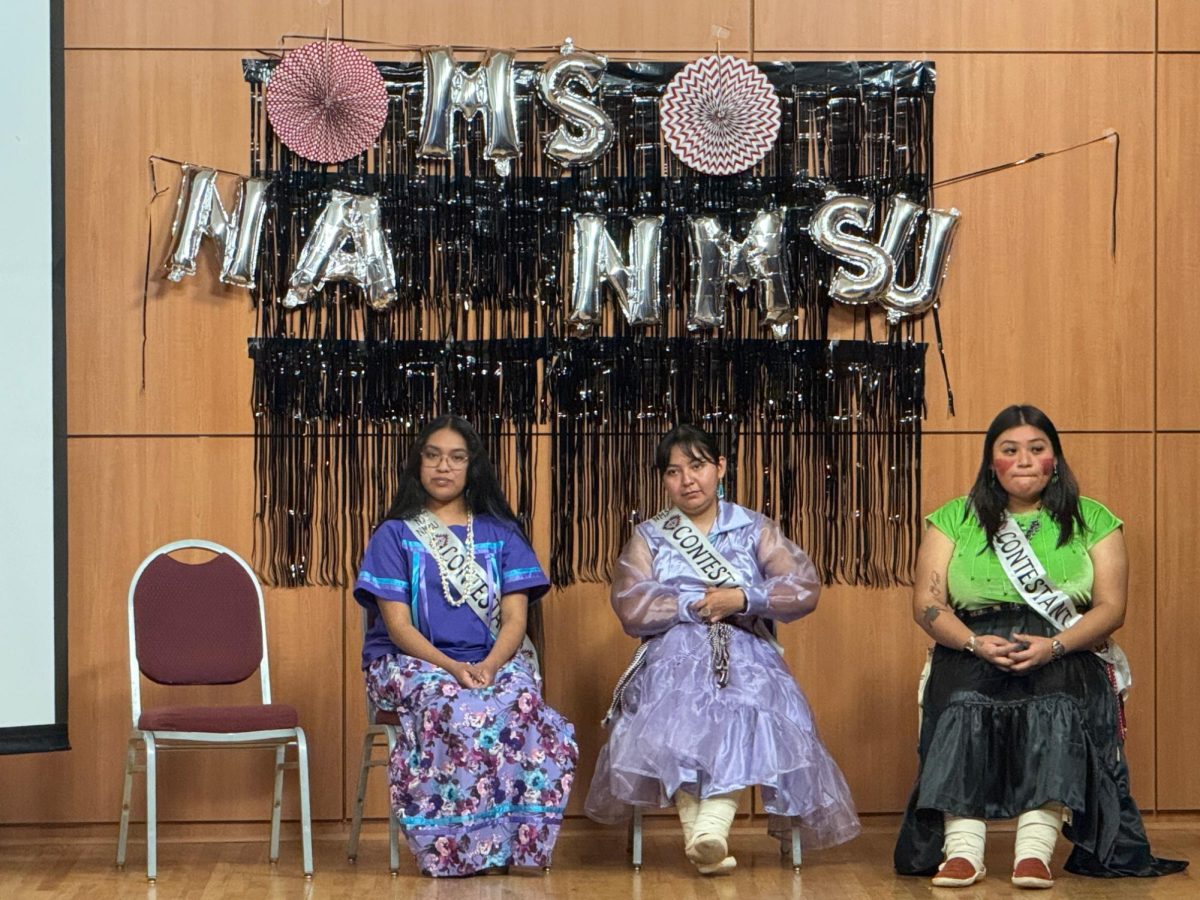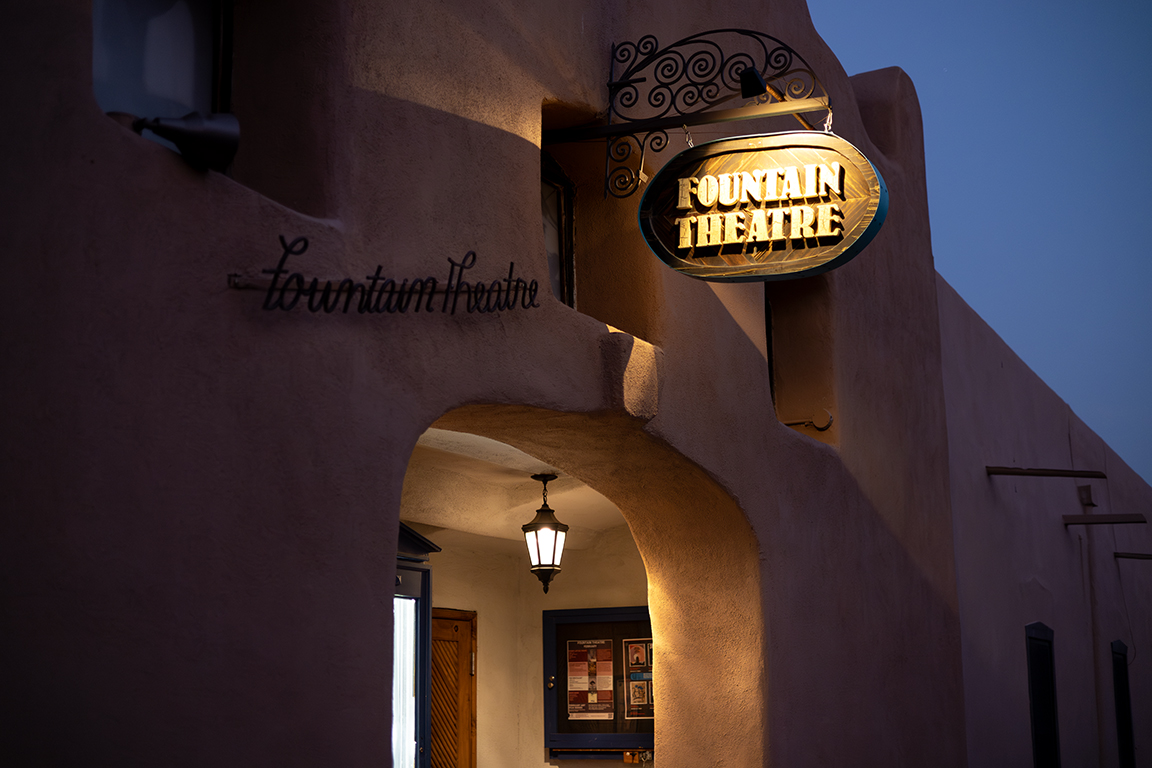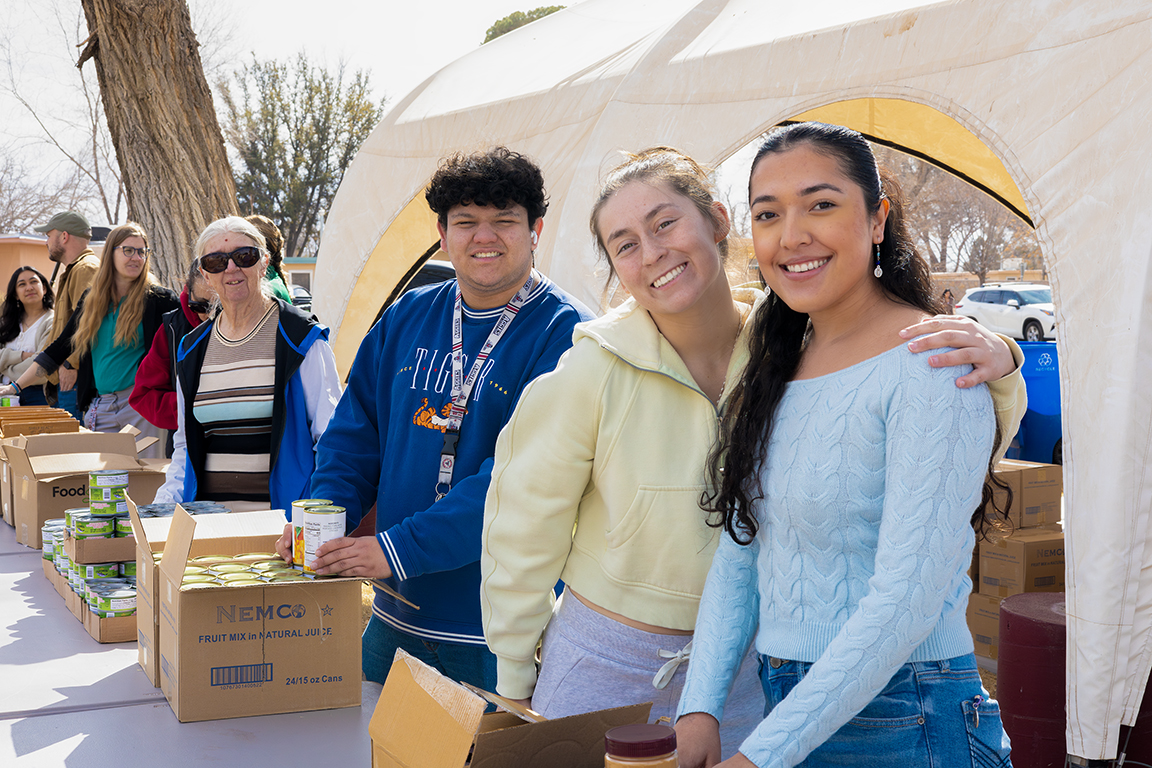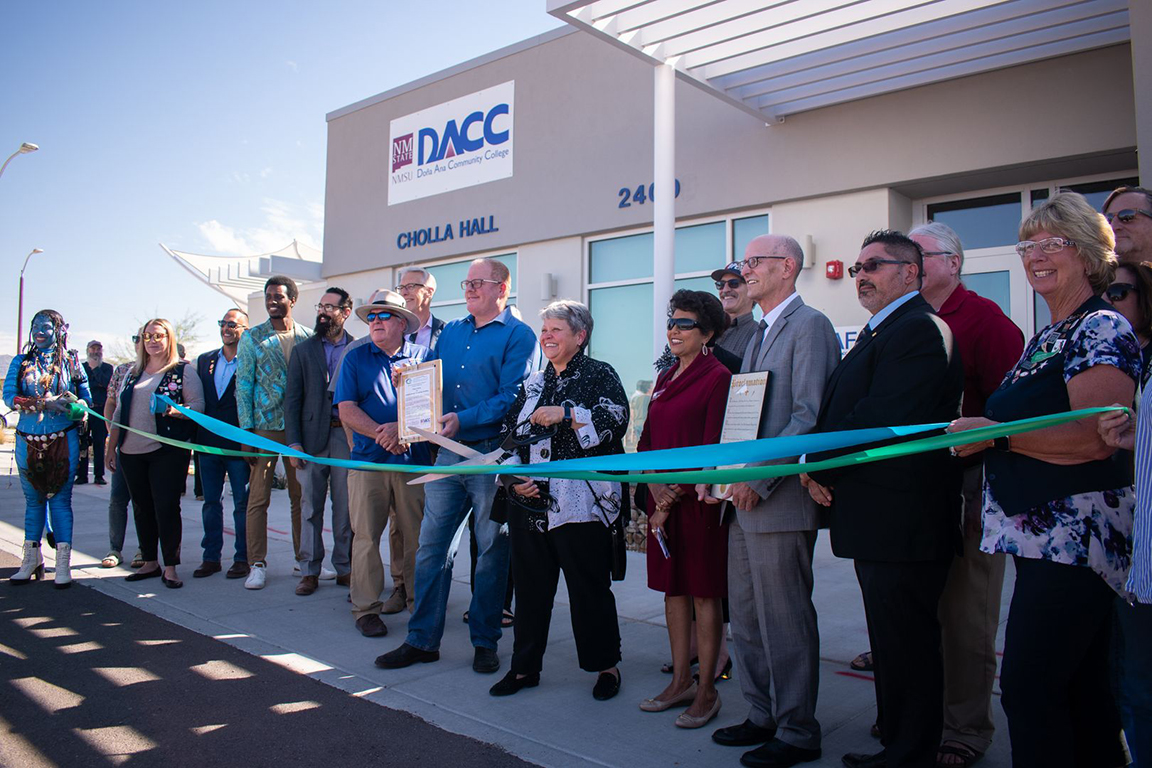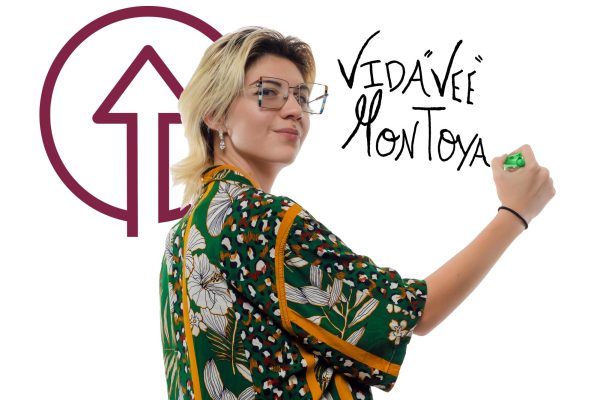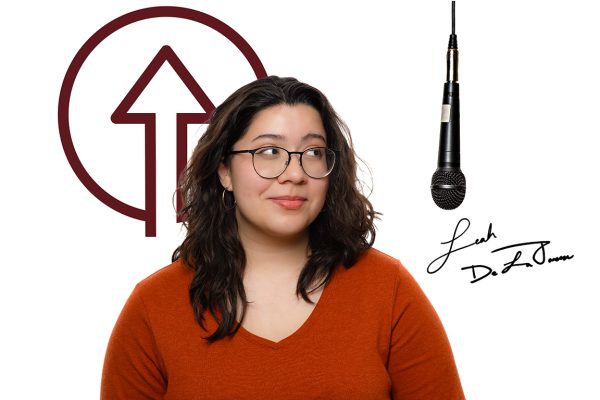The Northern-Southern Dance Group performed on the Corbett Outdoor Stage during New Mexico State University’s Indigenous Peoples’ Day celebration on Monday, Oct. 14. Hosted by the American Indian Program, the event highlighted the importance of community and culture through the performances by an influential family.
The Garcia-Chavez family formed the Northern-Southern Dance Group within the past year and has since impacted their community in various ways. Last September, Anthony (Ants) Garcia, the grandfather of the individuals in the Northern-Southern Dance Group, endured a major heart attack. During his recovery, his daughter took him back home to Jemez where his family cared for him for five months.
A teacher at Jemez Valley High School reached out to Garcia asking him to teach her daughter the “Winter Buffalo Dance”. The following week, his grandson asked him to sing the song for them, and he “couldn’t tell him no.”
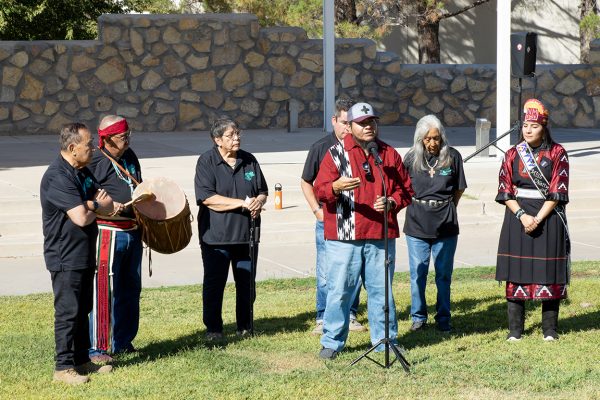
Michael Ray, director of the American Indian Program, welcomes people to the Indigenous Peoples’ Day event. Oct. 14, 2024. (Leah De La Torre)
“I got lucky that they had YouTube there, and they were doing the Buffalo Dance song,” Garcia said. “So, I started listening to the songs and somehow, some way, the higher power brought this tune. So, I went ahead [and taught them] and we performed our Native American Day in Jemez.”
Garcia mentioned that he was happy to help his grandsons learn this dance, and many other people enjoyed it as well. He said that after their first performance, they were encouraged by the community to “continue on this journey” and keep dancing.
Manuel Chavez, the father of the members in the Northern-Southern Dance Group explained that he speaks the Toa language.
“…I am from the Waatoa community, and from there Toa language is the only spoken language in New Mexico out of the 19 Pueblos. And I am representing the southern side. And I am grateful that, you know, we both came together as a northern and southern net truth for our kids. Here, they do sacrifice themselves every day for the blessings to be returned to you guys.”
Natalie Thomas, the Program Coordinator for Black Programs at NMSU, said she looks forward to the “feeling of unity” present at events like these.
“When you listen to the drums, it beats literally to the rhythm of your heart, which is incredible that it’s able to do that as an outside source,” Thomas said. “But when you watch things like this, it makes you try to figure out, ‘okay what is my connection to my past?’ Or even if you can support other people that are able to have a direct connection, because we are our experience and we are the stories told about our past and about our people.”
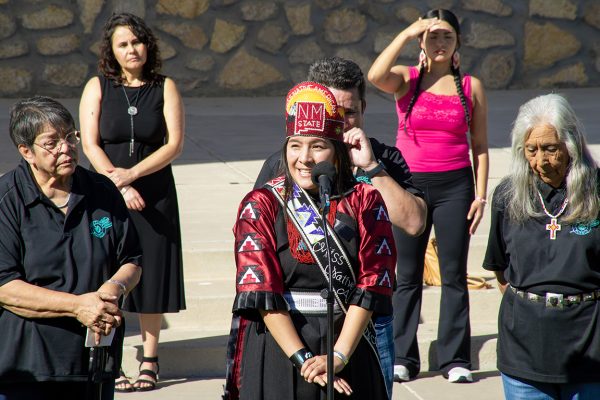
Thomas elaborated that she enjoyed watching the performance because “it is a direct link to their people, and their past and culture”. She admired how the performers spoke in their native language, which was passed down from generations before them.
Malaya Chavez, the youngest performer of the Northern-Southern Dance Group, performed in “Winter Buffalo” and “The Women’s Pueblo”. The latter was her favorite dance because “the Buffalo is protecting the women.” She said she started learning to dance when she was seven years old. Her favorite parts of her dancing apparel are the colors and designs, including hummingbirds that represent her auntie.
Bortaia Chavez, whose name translates to “Butterfly” in the Charis language, performed in “The Women’s Pueblo”, “The Eagle”, and “Winter Buffalo”. Chavez’s favorite dance was “The Women’s Pueblo” because it includes both of her sisters and shows the close connection shared between the three of them.
“I always like to take part in my culture, because I feel stronger when I dance,” Chavez said.
Ensey Chavez performed in “The Wisher”, “The Eagle”, and the “Group Pueblo”. He started dancing when he was five years old. When he’s dancing, he feels “like the spirits are there with me to send a blessing out to the people that are watching.”
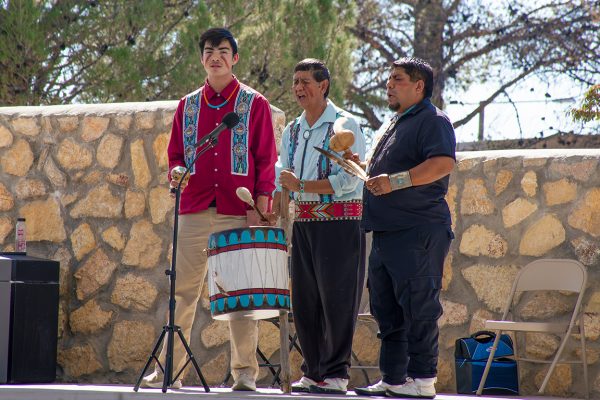
Jennifer Garcia, who performed in “The Women’s Pueblo”, and “Winter Buffalo”, said she is often used to dancing in the community, but prefers dancing with her family.
“We’re all closer together,” Garcia said. “So, I think that’s a plus … I prefer ‘The Women’s Pueblo’ because it’s all about women empowerment, basically bringing everybody up.”
Sean Lonase, a photographer at the Indigenous Peoples’ Day event and alum of NMSU, said he has many connections with the American Indian Program as he used to work with them as a student. He comes from the Pueblo of Zuni in the northwest part of the state. Lonase discussed the importance of the Indigenous community persevering through obstacles and preserving tradition.
“The future is always changing,” he said. “But as far as for Indigenous, for Native people, you know, we continue to strive and try to push through with the challenges and stuff we faced in history … we always are trying to adapt … also trying to strengthen our culture and keep our tradition going, especially for the younger people.”
After watching the performance, Thomas reflected on the power of art in education and culture.
“Art is so very important,” she said. “[Without it], who are they going to learn and read and write about? How are they going to find anything of importance? … Anybody can express it. And if you take away someone’s ability to express, I think that is very dangerous, and I think it’s … I think that’s ignorance abound honestly.”



